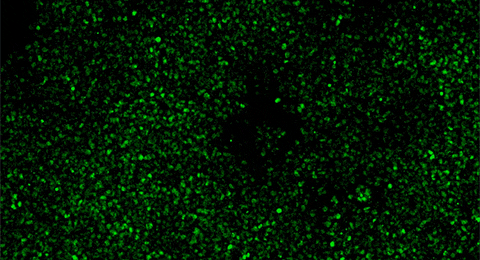HSCI researchers set the stage for better understanding musculoskeletal disorders and advancing treatments

More than 20 years ago, the lab of developmental biologist Olivier Pourquié discovered a sort of cellular clock in chicken embryos where each “tick” stimulates the formation of a structure called a somite that ultimately becomes a vertebra. In the following years, Pourquié and others further illuminated the mechanics of this so-called “segmentation clock” across many organisms, including creation of the first models of the clock in a lab dish using mouse cells.
While the work has improved knowledge of normal and abnormal spine development, no one has been able to confirm whether the clock exists in humans — until now. Pourquié led one of two teams that have now created the first lab-dish models of the segmentation clock that use stem cells derived from adult human tissue. The new research is published in the journal Nature.
The achievements not only provide the first evidence that the segmentation clock ticks in humans, but also give the scientific community an improved way to study human spine development as well as musculoskeletal disorders.
“We know virtually nothing about human development of somites, which form between the third and fourth week after fertilization, before most people know they’re pregnant,” said Pourquié, principal faculty member of the Harvard Stem Cell Institute and professor of genetics in the Blavatnik Institute at Harvard Medical School. “Our system should be a powerful one to study the underlying regulation of the segmentation clock.”
“Our innovative experimental system now allows us to compare mouse and human development side by side,” said Margarete Diaz-Cuadros, a graduate student in the Pourquié lab and co-first author of the Harvard paper. “I am excited to unravel what makes human development unique.”
Finding the human segmentation clock
Although scientists have derived many kinds of tissue by reprogramming adult cells into pluripotent stem cells and then coaxing them along specific developmental paths, musculoskeletal tissue proved stubborn. In the end, however, Pourquié’s team discovered that they could facilitate the transformation by adding just two chemical compounds to the stem cells while they were bathed in a standard growth culture medium.
“We can produce paraxial mesoderm tissue with about 90 percent efficiency,” Pourquié said. “It’s a remarkably good start.”
The researchers were surprised to find that the segmentation clock began ticking in the cells when they were in the dish, and that the cells didn’t first need to be arranged on a three-dimensional scaffold more closely resembling the body.
“It’s pretty spectacular that it worked in a two-dimensional model,” Pourquié said. “It’s a dream system.”
Paving the way for clinical applications
The researchers’ models open new doors for understanding developmental conditions of the spine, such as congenital scoliosis, as well as diseases involving tissues that arise from the same region of the embryo, known as the paraxial mesoderm. These include skeletal muscle and brown fat in the entire body, as well as bones, skin and lining of blood vessels in the trunk and back.
Pourquié hopes that researchers will be able to use the new stem cell models to generate differentiated tissue for research and clinical applications, such as skeletal muscle cells to study muscular dystrophy and brown fat cells to study type 2 diabetes. Such work would provide a foundation for devising new treatments.
“If you want to generate systems that are useful for clinical applications, you need to understand the biology first,” Pourquié said. “Then you can make muscle tissue and it will work.”
Discover more
This story was originally published on the HMS news website with the title “Backbone of Success” on January 8, 2020.
Source article: Diaz-Cuadros, M., Wagner, D. E., et al. (2020). In vitro characterization of the human segmentation clock. Nature. DOI: 10.1038/s41586-019-1885-9
This research was funded by the National Institutes of Health.
Pourquié has started a company called Anagenesis Biotechnologies based on protocols developed for this study. It uses high-throughput screening to search for cell therapies for musculoskeletal diseases and injuries.
